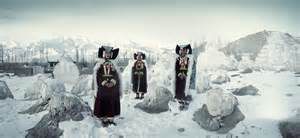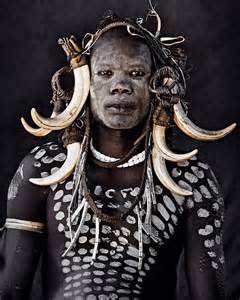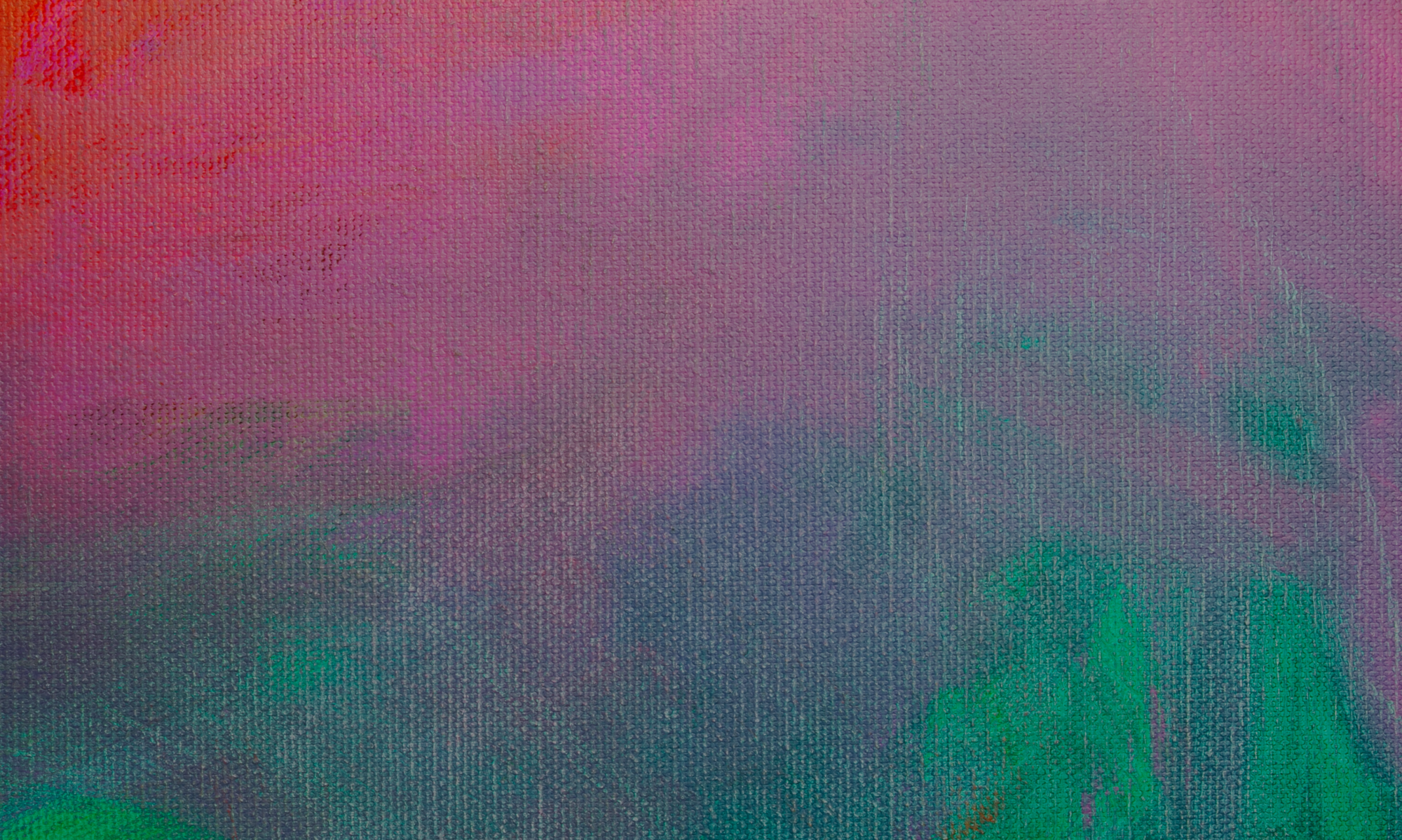
Currently, Jimmy Nelson’s photographic project “Before They Pass Away” is touring the world. As the somewhat dramatic title indicates, the theme is extinction, and the subjects of this supposed extinction are indigenous cultures. From Inuit tribes in Northern Siberia to Argentinian Gauchos in the South, Nelson has travelled the widths and lengths of the globe to unearth cultures almost entirely disconnected from modern society.
The project has been both celebrated and criticized. Visually speaking, the photographs are without a doubt impressive. When the exhibition visited Fotografiska Museet in Stockholm last year, I was myself immediately seduced by the gigantic glossy tableaus. So big are they that they let you immerse yourself in widespread landscapes as well as the slightest ornamental detail on the items of clothing. Visual seduction aside, however, something starts to chafe when getting deeper into the information and statements accompanying the project. This is far from an objective anthropological exposé. Nelson makes no qualms about it. In the statement accompanying the exhibition, Nelson’s photographs are said to be entirely subjective. They do not seek to capture the truth. The figures are obviously posed, romanticized and beautified. In Nelson’s words they are made up to be “icons” rather than real, everyday people. Okay, one thinks, so are the photos to be read as some sort of postmodernist interrogation of the notion of truth? It would be one thing if it was, but Nelson’s influences lean more toward Edward S. Curtis than Jean-Francois Lyotard, so in fact it’s quite the opposite. In other places he even considers himself a “collector of truth”. The question inevitably poses itself – how can one be both the representative of truth and yet highly subjective? No doubt there seems to be some confusion about Nelson’s conceptual pediments. Many have been understandably offended by Nelson’s reckless wielding of his flimsy version of truth and the project has suffered severe critique from Survival International (http://www.survivalinternational.org/news/10244) as well as representatives of the very cultures he photographs ( http://www.theguardian.com/global-development/2014/oct/29/jimmy-nelson-indigenous-people-survival-international). What they have objected to is how Nelson presents these cultures as threatened by modern life when they show no signs of disappearing, but also the idealized manner in which they appear in the photos.
As a Swedish gallery dealing in Native American art, I can relate to Nelson’s position. I am by necessity an outsider to the culture I am interested in. I want the objects that are exhibited in my gallery to be beautiful, but I also want them to say something about the cultural background from which they originate. Not always does this fit into my what my expectations tell me. One way of making the job easier is through personal contact with the artists. All of the art in Kiva Gallery are chosen on the basis of a personal relationship with the artists. I have visited them in their homes. I have talked to them. I’ve been in awe. I’ve disagreed. I’ve been wide-eyed and I’ve been disappointed. I’ve been human to them and they have been human to me. I have listened to their stories and as a result I’ve sometimes had to revise my preconceptions. It doesn’t really seem like Nelson has listened to the stories of the people he portrays. If he had he would know that the Dani people of West Papua don’t like to be called the “most dreaded head-hunting tribe of Papua” (http://www.survivalinternational.org/news/10628).
Not once in my encounters with Native Americans have I heard talk of the culture dying out. And If Nelson had listened I doubt that he would have heard it. My point is that marginalized people should be allowed to be in charge of their own narrative.
The problem is that Nelson tries to be both an artist and an anthropologist. Considering the scarcity of documentation around the cultures Nelson targets, the artist and the anthropologist are far from comfortable bedfellows. As an artist, Nelson is free to do whatever he feels like with his subjects. But an anthropologist doesn’t have – or shouldn’t have – that freedom. An artistically distorted image needs an anthropologically “true” image as a counterweight, otherwise there is no way to recognize the distortion. But if no other images exist, Nelson’s image becomes the primary point of reference and thereby artificiality easily becomes the “true” image. This becomes an issue considering that Nelson merits himself on capturing cultures that are infamously hard to access, which is to say that documentation is very scarce. Nelson has to make a choice: either the images are to be considered as a purely subjective expression of an artist’s vision or objective anthropological documentation. Having it both ways leaves Nelson open to the charge of misrepresentation and falsification.
Of course, Nelson means well – he wants the world to see how beautiful the people he meets are. Nothing wrong with that. The problem is that such a shallow approach is simply not enough to live up to his grander ethnographic ambitions. In his TED talk, Nelson gives a taste of just how shallow his vision  of truth really is. In a slideshow of his photographs, Nelson includes an image of a group of Samburu Warriors, shot from the back. The figures, Nelson claims, are often mistaken for women. He then shows the frontal view – tadaa, they’re men! The point of this little demonstration is to encourage us to “look closer, for things are not always what they seem”. If Nelson’s vision of the truth is as superficial as that it goes without saying that his claims of the photos as an “important ethnographic record” should be disqualified. Elissa Washuta has faulted Nelson’s preoccupation with visual cues of identity and notes that, “Personal strongholds of identity are often invisible.“ (http://www.salon.com/2013/11/24/americas_w
of truth really is. In a slideshow of his photographs, Nelson includes an image of a group of Samburu Warriors, shot from the back. The figures, Nelson claims, are often mistaken for women. He then shows the frontal view – tadaa, they’re men! The point of this little demonstration is to encourage us to “look closer, for things are not always what they seem”. If Nelson’s vision of the truth is as superficial as that it goes without saying that his claims of the photos as an “important ethnographic record” should be disqualified. Elissa Washuta has faulted Nelson’s preoccupation with visual cues of identity and notes that, “Personal strongholds of identity are often invisible.“ (http://www.salon.com/2013/11/24/americas_w
rongheaded_obsession_with_vanishing_indigenous_peoples/). Which is to say that Nelson would do well to focus on factors other than mere superficial appearance. This might be much to ask of a photographer. But what if Nelson instead of dressing his subjects up to look as exotic and obsolete as possible had asked them to be photographed with something that was important to them. Maybe someone had wanted to be portrayed with their iPhone playing – I don’t know – Candy Crush. All of a sudden a more complex picture comes to light, one that is not compatible with generalizing and dramatic claims about dying cultures. Sadly, Nelson doesn’t allow for such mixtures of tradition and progress. His narrative is already in place, and it is one where his photographs stands as the last heroic record of vanished cultures.
There is a glaring absence of Native North American cultures from Nelson’s project. The exclusion was consciously made by Nelson on grounds that North American tribes haven’t retained their heritage. Not only is this a deeply insulting claim but it also bears witness to how limited and antiquated Nelson’s ethnographic guidelines are. It goes to show that Nelson’s conclusion is already in place even before he has started his photographic documentation. As a result, Nelson has put himself in the unflattering and eminently colonialist position of judging was is and is not to be considered as authentic to a culture. Similar judgments of authenticity often guided the practice of Nelson’s hero Edward S. Curtis. Just like Nelson, Curtis would dress up his subjects and pose them for the camera. But sometimes an unwelcome reality would still intrude. Curtis would then have to alter photographs after being shot to fit his view of how things should be (http://www.salon.com/2013/11/24/americas_wrongheaded_obsession_with_vanishing_indigenous_peoples/ ). In a portrait of Little Plume and his son Yellow Kidney, for instance, Curtis retouched the picture to remove an alarm clock that he deemed incompatible with the preconceived simple ways of the Native. It’s a paradoxical and self-defeating way of documentation. On the one hand the presumed likeness of photography is utilised to bring us closer to cultures most have very little knowledge about. But on the other hand subjective judgments of what is and what is not part of the culture brings us farther away from the present realities of these cultures.
If Nelson had listened more he would have realised that change does not necessarily equal death. A lot of the cultures he portrays have changed from what they were a hundred years ago. That does not mean they are about to disappear.
Native Americans today watch TV, they listen to Beyoncé or Taylor Swift, they skateboard. This does not mean that they “havent retained their heritage”. They also hold traditional ceremonies, pow-wows and sweat lodges. This diversity has not led to cultural death. On the contrary Natives are quite proud of their culture which today includes both traditional and modern elements.
And if Nelson would have allowed his subjects to speak louder than his camera I doubt they would have spoken of death.
